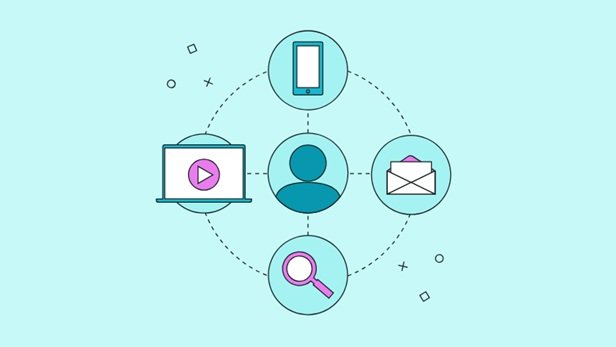In an era where customer touchpoints are as diverse as the audiences they reach, it’s never been more crucial for brands to harness the power of multi-channel marketing. Automation offers a unique opportunity, allowing brands to deliver consistent and personalized messages across a range of platforms. It streamlines operations, enhances customer experience, and provides valuable insights that drive strategic decisions. Within this landscape, staying ahead of the curve means understanding and leveraging the latest in technology. Below, we dissect the multifaceted benefits of deploying multi-channel marketing automation to maximize your brand’s impact.
Unpacking Multi-Channel Marketing Automation: A Game Changer in Customer Engagement
Alt text: A desk featuring three computer monitors and a chair, set up for multi-channel marketing automation tasks.
At the heart of effective modern marketing is multi-channel marketing automation, and Adestra is a powerful tool that helps brands deliver consistent messages across email, social media, mobile, and more. This approach creates a seamless brand experience that builds trust and recognition while reaching customers on the platforms they prefer. By understanding individual behaviors and preferences, marketers can personalize content that truly connects, boosting engagement and loyalty.
What makes multi-channel marketing automation especially valuable is its ability to scale meaningful customer interactions without increasing manual effort. With Adestra, businesses can automate timely responses and engage customers when they’re most receptive, maximizing conversion opportunities. This efficiency lets companies of all sizes maintain strong, personalized connections without needing extra resources.
Streamlining Communication Across Platforms with Automation
The rise of digital platforms has made it challenging for companies to maintain consistent communication, but marketing automation simplifies this by synchronizing messaging across channels. These tools integrate with various platforms to centralize strategies, ensuring brand consistency and reducing the risk of fragmented outreach.
This unified approach strengthens brand identity while also easing the workload for marketing teams. By automating routine tasks, teams can focus more on creative, strategic projects that drive innovation. Automation supports timely content delivery by scheduling posts during peak engagement times across time zones, improving visibility without the need for constant manual intervention.
How Marketing Automation Enhances Analytics and Decision Making
Analytical insight is vital to data-driven marketing, and automation tools provide powerful analytics to support it. These platforms gather and analyze campaign data across all channels, offering marketers a detailed view of performance and customer behavior. Automation software not only compiles information but also interprets it, uncovering patterns that guide smarter strategy adjustments.
Real-time tracking allows for quick pivots when a message or channel underperforms, enhancing agility and reducing inefficiencies. With predictive analytics, marketers can also anticipate future trends and consumer needs, helping brands stay relevant and competitive. This data-centric approach strengthens decision-making and improves engagement and conversion outcomes.
Personalizing Customer Journeys at Scale through Automation
Alt text: A man works on a computer with multiple monitors, focusing on automating personalized customer journeys at scale.
Marketing automation enables large-scale personalization by using customer data to craft individualized journeys, increasing satisfaction and loyalty. Segmentation tools allow marketers to group audiences by specific criteria, making messages more relevant and engaging, which improves interaction and conversion rates.
Automation ensures consistency across touchpoints—from first contact to post-purchase—creating a seamless customer experience that fosters trust. Automated systems can respond dynamically to customer behavior, such as sending a discount after a cart abandonment, enhancing engagement, and boosting sales. This level of personalized interaction is key to driving retention and building stronger relationships with customers.
Measuring the ROI of Multi-Channel Marketing Automation Initiatives
Marketing automation enhances ROI measurement by enabling real-time tracking of campaign costs and outcomes, allowing marketers to quickly identify and prioritize high-performing strategies. Centralized platforms simplify attribution across channels, making it easier to optimize budgets toward tactics that drive conversions.
Automation also supports long-term customer value by nurturing ongoing engagement and identifying upsell or cross-sell opportunities based on behavior. These tools reduce customer acquisition costs through improved targeting and personalized messaging, increasing conversion rates while lowering outreach expenses. Together, these benefits contribute to more efficient marketing efforts and a stronger return on investment.
Overall, the strategic application of marketing automation across multiple channels marks a significant leap forward for businesses seeking to enhance customer engagement, optimize decision-making, and personalize consumer interactions at scale. By effectively measuring the ROI of these initiatives, companies can reinforce their competitiveness in a bustling digital marketplace, yielding not just operational efficiency but genuine, measurable growth.










